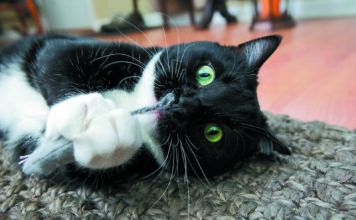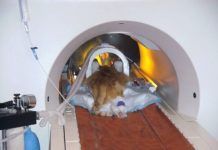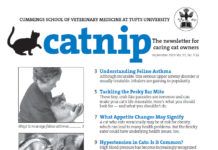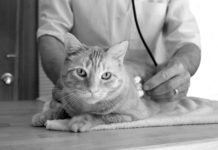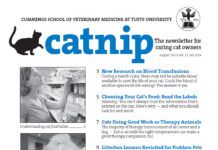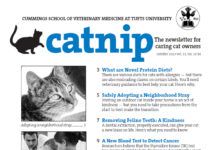MRI: An Invaluable Diagnostic Tool
Among all imaging technologies employed to explore the internal structures of a cats body, none is more complex and, in some respects, more effective than magnetic resonance imaging (MRI). During the past two decades, this sophisticated technology has become immeasurably valuable to veterinarians as a tool for diagnosing several feline disorders. …
Researchers Have New Insight into Feline Trichomoniasis
Researchers Identify Parasite University of Florida researchers have recently identified a new species of Tritrichomonas in domestic cats - finally distinguishing the parasite that causes the disease in felines from the agent previously believed to affect both cats and cattle. According to researchers, while the disease is just beginning to be understood and tested for in cats, it costs cattle producers millions of dollars each year in lost revenue. Up to now, there has only been one…
New Research on Transfusions for Cats
Every now and then, a cat develops anemia that is so severe that a transfusion is required to save its life. Cats have distinct blood types, so obviously it is important to make sure that a severely anemic cat receives the proper blood type. Blood types in cats are classified similar to those in people. Theres type A, type B and type AB. (There is no type O, however.) Most cats are type A. Purebred cats…
Feline Heart Murmurs
During the course of a routine physical examination, a veterinarian will use a stethoscope to listen carefully to the sound of a cats beating heart. What the veterinarian wants to hear is a gentle, steadily pulsating thump-thump, which would indicate that the animal is in good health, at least as far as her heart is concerned. What the veterinarian does not want to hear is a heart murmur-a rhythmic swishing sound that might be inconsequential.
Important Research That May Ultimately Unravel FIP
The Missing Link to FIP After gathering the worlds largest collection of samples of the virus that causes feline infectious peritonitis, Cornell scientists may finally have found the mutation that makes the virus fatal. Scheduled to be published in an upcoming issue of Emerging Infectious Disease, the Cornell study provides a long-sought breakthrough - which will hopefully open the door to development of the first working diagnostics, vaccines and treatments for feline infectious peritonitis (FIP). …
The Removal of Feline Teeth
Regardless of breed or gender, all cats have a number of things in common, including their dentition - the number, size, shape, arrangement and function of their teeth. They also share an unfortunate tendency to lose some or all of these teeth over the course of their lives. In some cases, the missing teeth have been knocked out during a traumatic event - the animal has been struck by a car, for example, or has…
Serum TK Blood Tests for Cats
Lymphoma is the most common malignancy in cats, accounting for approximately 33 percent of all diagnosed cancers in cats. Diagnosis is usually achieved either via cytology, in which a needle is inserted into the affected tumor or lymph node and cells are removed and evaluated on a microscope slide; or via biopsy, in which a small piece of the tumor or lymph node is removed and then examined by a pathologist. …
Feline Vaccinations: Core and Non-Core
A few decades ago, recommendations regarding feline vaccinations were relatively simple. Veterinarians generally agreed that all domestic cats should be inoculated annually with a number of vaccines. In recent years, however, the issue has become far more complicated and in some respects more controversial. Back in the early 1990s, only four or five vaccines were available; today, no fewer than 10 vaccines have proven to be generally effective in providing a cat with immunity against a…
Tufts Researchers on Ways to Help Feral Cat Population
Spay and neuter: not ideal? As many people realize, colonies of feral cats can grow at a rapid pace, leaving them to combat miserable conditions and causing the death of millions of birds, small mammals and reptiles. In urban areas, wild-born cat colonies can also create health hazards to humans and other species, and create quality of life issues like foul odors, loud fighting and flea infestations. In the U.S., experts believe that the population of…



